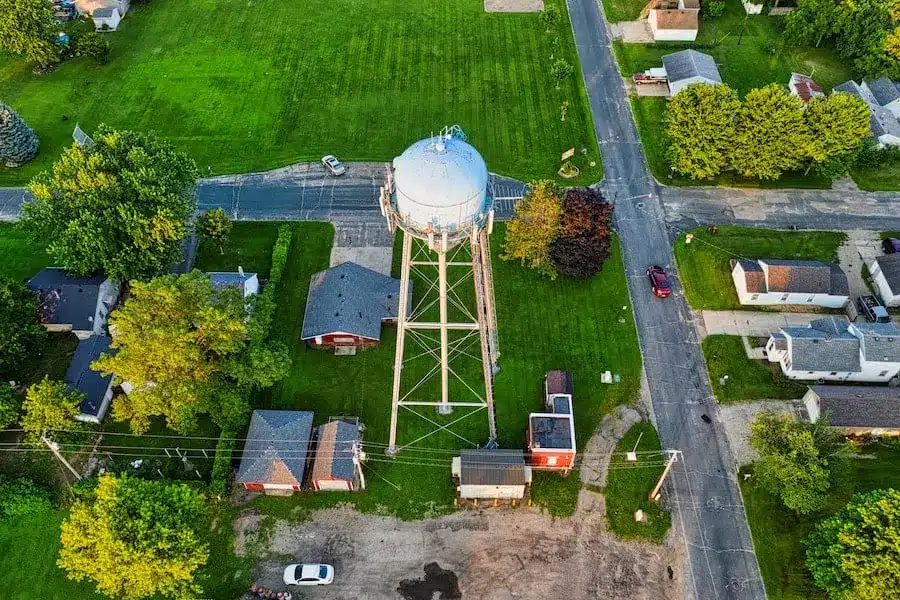
If you need extra access to water that you can’t get from your home tap, then a water storage tank is an excellent solution to your needs. Water storage tanks can be used to naturally accumulate and hold thousands of gallons of safe water to use for anything you need.
The cost-effectiveness of a 1000-gallon water tank in particular illustrates how an affordable upfront investment translates to a reduced water bill over time that eventually pays for itself.
A good water storage tank will allow you to waste and use less costly municipal water, but you need to ensure you find one that properly suits your needs. Water storage tanks come in a variety of sizes and styles that affect how they function.
To help you purchase the best water storage tank for your property, we’ve got some useful tips below.
Material Make-Up
To start, you’ll need to decide on what material you want for your water storage tank. Three materials are used most commonly; this includes steel, plastic (polyethylene), and fiberglass.
Steel storage tanks are best if you need a particularly large unit and want it to last for years. They are surprisingly easy to install and tend to be some of the most cost-friendly choices for water storage.
If you don’t need a large unit and just want something easy to maintain, then you should opt for a plastic storage tank. Plastic tanks are particularly durable and make for great rainwater collection systems.
Fiberglass tanks are less common and are best when used in a commercial setting. This is because they are good for storing chemicals and industrial liquids.
With this in mind, you’ll likely want a high-quality steel or plastic water storage tank for the best mixture of durability, cost, and simplicity.
Above-Ground Or Underground?
Next, you’ll want to determine whether you want the water storage tank above or underground. To answer this, you should understand why you want the water storage tank.
If your purpose results in you needing to use the water frequently, you probably want an above-ground tank because it is more accessible and easier to use. You’ll need to have a spot to place it and this can be tricky depending on how large the tank is.
Alternatively, underground storage tanks are better for infrequent use or emergency purposes. They can also be kept out of sight and won’t take up space like an above-ground tank would.
For a home water storage tank, either choice is fine but placing it above ground is recommended so that you can use it regularly.
Capacity
One of the most important questions to settle is the capacity of your water storage tank.
Smaller tanks will hold less water, but they are easier to maintain and cost less. Alternatively, larger tanks have a greater capacity at the sacrifice of being harder to manage and costing more.
In addition, the size of your tank will determine how you can use it. Irregular personal use will only require a small tank, but you might want something closer to a 1000-gallon tank if you have significant water needs.
As you may expect, the price of a water storage tank will increase along with the size of the tank, which is why you should ensure you pick the adequate size for your needs.
Installation Options
The final consideration when purchasing a water storage tank is the installation options you want. Specifically, you should decide if you want an adapter for rainwater collection and pumping options for easy use.
Water storage tanks are incredibly cost-effective ways of increasing how much water you can use, but you need a way of collecting water freely. With rainwater collection, you can gather the water you need to fill your tank up as rain gradually falls. This is the water you can then use freely instead of always paying for municipal water.
Once you have your tank filled, you’ll need a way to get the water out. The two primary approaches to this involve pressurized and manual pumping.
Pressurized pumping monitors the water within your storage tank and turns it on when needed to keep levels appropriate. This is good for water storage tanks that are connected to your greater plumbing system. Alternatively, manual pumping involves switching the flow of water on as you need.
Determine how you want to use your water storage tank and the installation options you add will aid in achieving this purpose.
Closing Thoughts
Finding the right storage tank for your extra water needs can be tricky with so many options to choose from. When you understand how the differences between each tank matter, you can determine which water storage tank will work best for you.
In particular, you should keep an eye on the material make-up of the storage tank, decide between underground or above-ground placement, choose a proper size, and pick installation options that will help you use the water effectively.
Water storage tanks are appealingly cost-effective and the savings only begin as soon as you install your tank!








